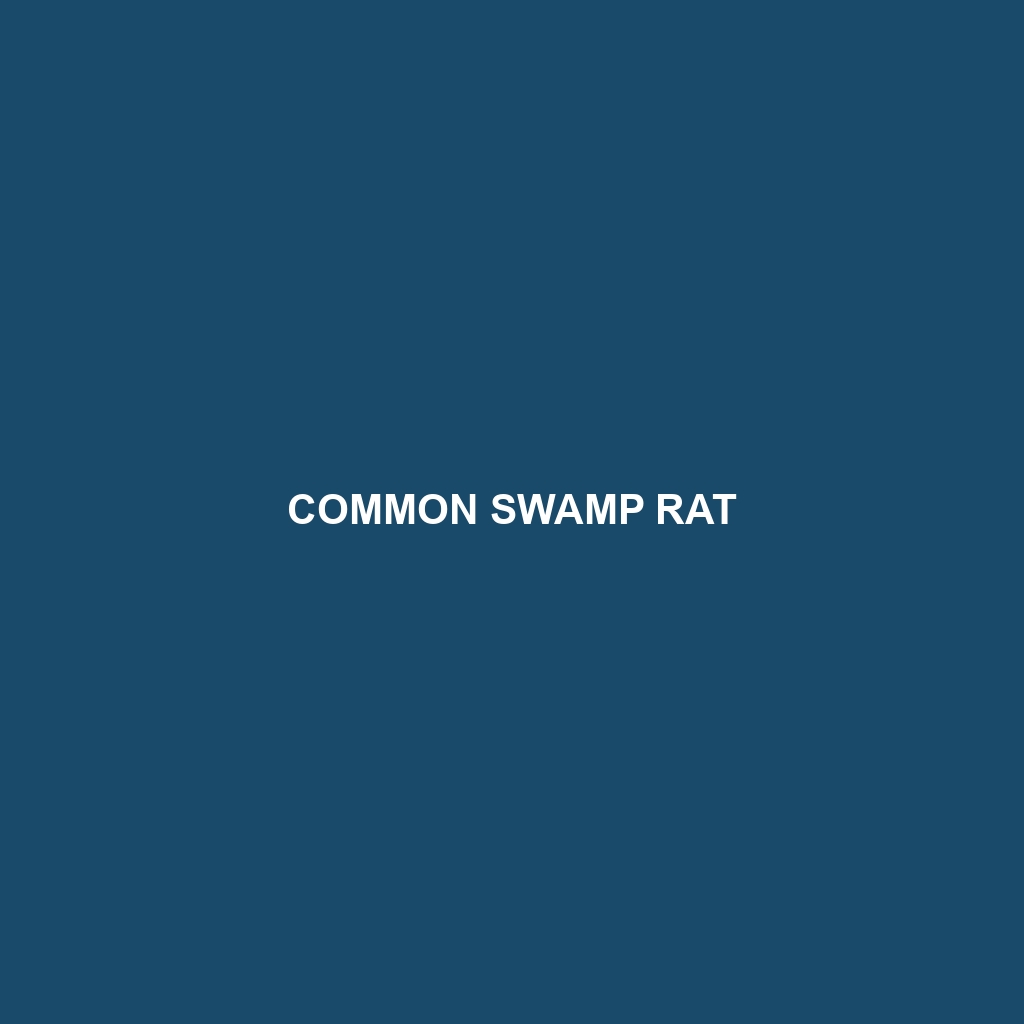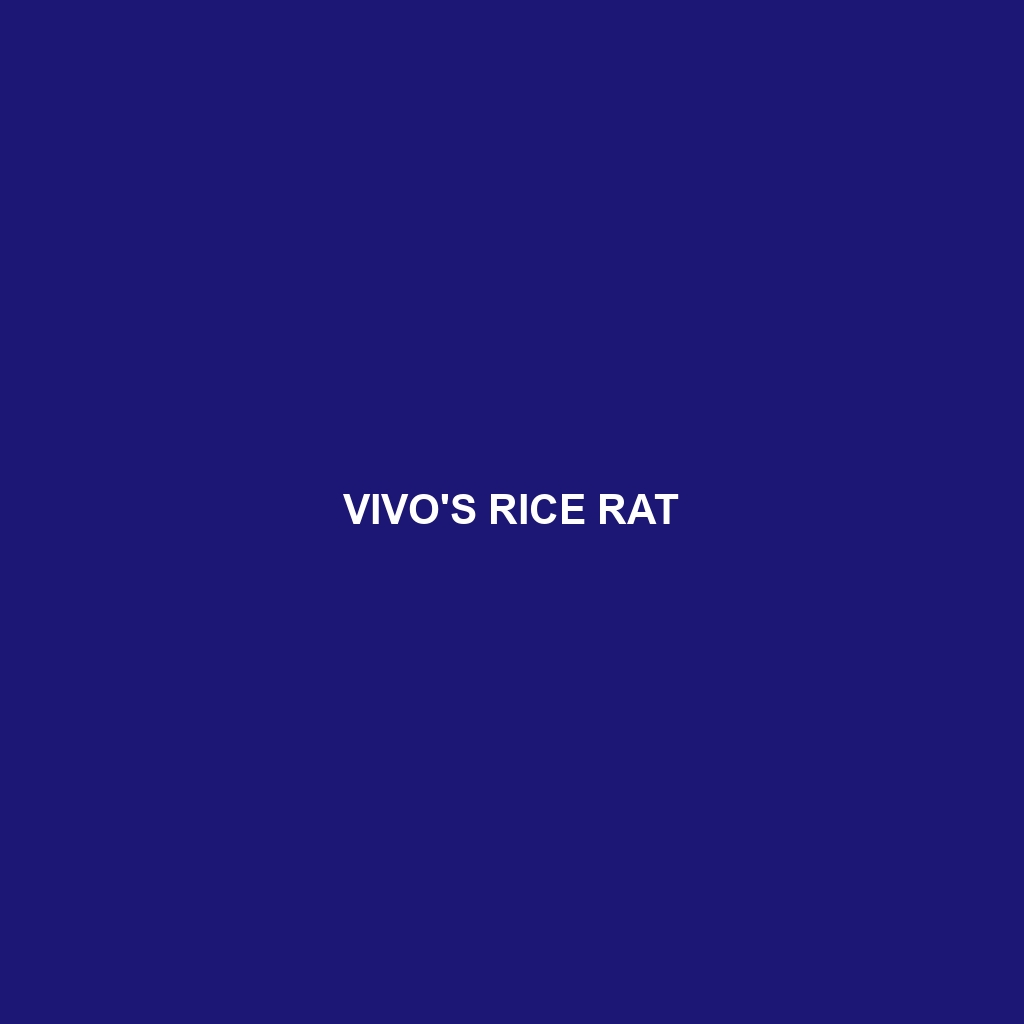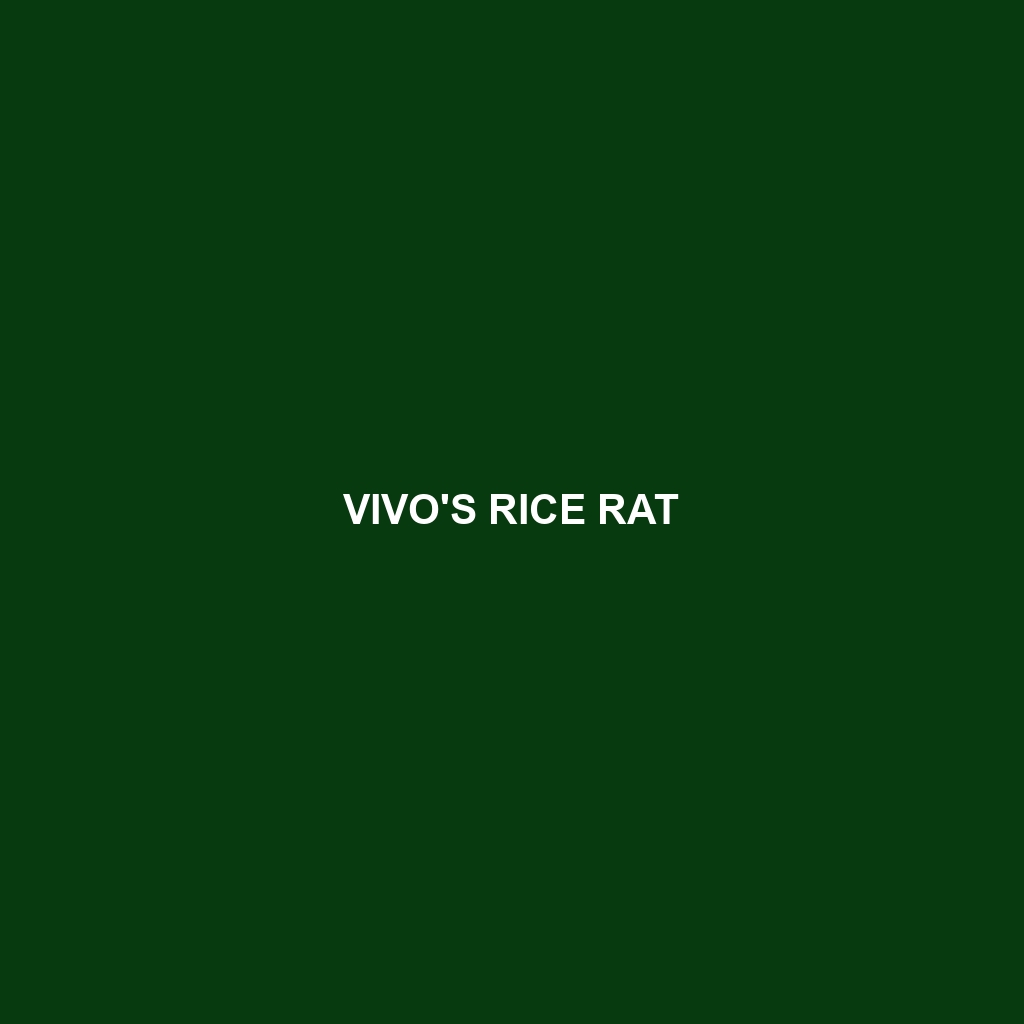Discover the fascinating world of the Common Swamp Rat, a resilient rodent thriving in the wetlands of eastern Australia and New Guinea. With its impressive swimming abilities, unique burrowing habits, and crucial role in the ecosystem, this species not only maintains healthy plant communities but also serves as a vital food source for local predators. Delve into their habitat, diet, and conservation status to learn more about these remarkable creatures.
Tag: wetland animals
Vivo’s Rice Rat
Discover Vivo's Rice Rat (<i>Oryzomys vivo</i>), a fascinating medium-sized rodent native to the wetlands of Central and South America. With their nocturnal foraging habits and omnivorous diet, these agile creatures thrive in diverse habitats, playing a vital role in seed dispersal and the ecosystem's food web. However, classified as vulnerable, they face threats from habitat loss, underscoring the need for conservation efforts to protect their delicate environments.
Vivo’s Rice Rat
Discover Vivo's Rice Rat (<i>Oryzomys vivo</i>), a fascinating medium-sized rodent native to the wetlands of Central and South America. With their nocturnal foraging habits and omnivorous diet, these agile creatures thrive in diverse habitats, playing a vital role in seed dispersal and the ecosystem's food web. However, classified as vulnerable, they face threats from habitat loss, underscoring the need for conservation efforts to protect their delicate environments.
Vivo’s Rice Rat
Discover Vivo's Rice Rat (<i>Oryzomys vivo</i>), a fascinating medium-sized rodent native to the wetlands of Central and South America. With their nocturnal foraging habits and omnivorous diet, these agile creatures thrive in diverse habitats, playing a vital role in seed dispersal and the ecosystem's food web. However, classified as vulnerable, they face threats from habitat loss, underscoring the need for conservation efforts to protect their delicate environments.
Vivo’s Rice Rat
Discover Vivo's Rice Rat (<i>Oryzomys vivo</i>), a fascinating medium-sized rodent native to the wetlands of Central and South America. With their nocturnal foraging habits and omnivorous diet, these agile creatures thrive in diverse habitats, playing a vital role in seed dispersal and the ecosystem's food web. However, classified as vulnerable, they face threats from habitat loss, underscoring the need for conservation efforts to protect their delicate environments.




